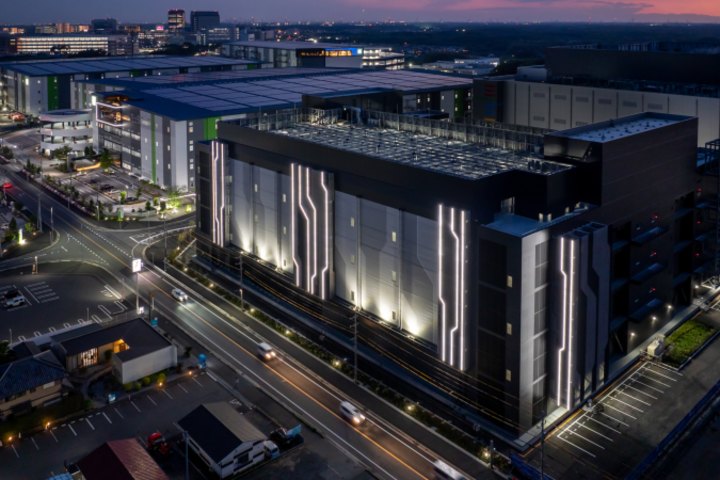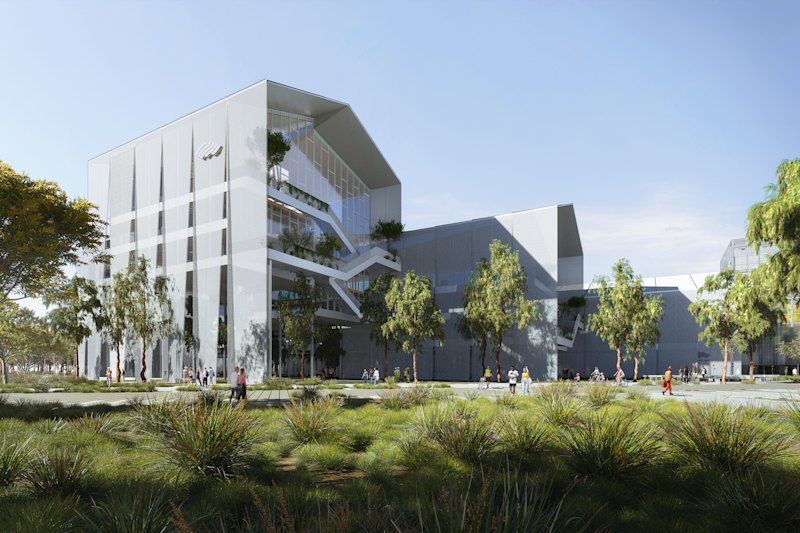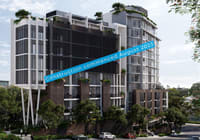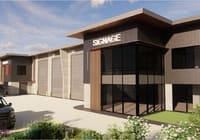
Goodman sets out its transformation from warehouses to data centres
The country’s biggest listed real estate investor, Goodman Group, says it will “look very different” in five years as it pivots away from warehouses and toward data centres, which now account for more than 40 per cent of its $13 billion in development projects.
Chief executive Greg Goodman described demand for information storage and processing capacity as “next level”, with the emergence of data centres as an asset class in strong demand only underscored by the $20 billion pricetag now on the Macquarie-backed, up-for-sale sector giant AirTrunk.
“It will be step change, a change in the character of Goodman,” Mr Goodman said of the company he founded in 1989 as the developer and owner of industrial property. The business, now valued at $66 billion, will transform into a “big infrastructure and real estate manager and developer” taking on increasingly complex projects, he said.

While Goodman has developments around the world, Moody’s Ratings analysts expect Asia and the Pacific will be the fastest-growing market, with capacity in the region to more than double by 2028 with investments of $US564 billion ($852 billion).
Still, there are plenty of hurdles for developers to overcome. An expanding data centre portfolio will expose Goodman to more carbon transition risk because of their massive demand for energy – and water, used to cool the facilities.
Mr Goodman said that data centres would grow to become more than 50 per cent of the company’s projects in development in the next few years as they moved from planning to construction, spurred on by the artificial intelligence boom.
“With our industrial projects, these will be bigger and more infrastructure-like with EV charging and more solar. Then you overlay that with data centres and our 5GW capacity, and you can take a view that on balanced development of both powered shells and turnkey projects, there’s $80 billion of development [end value] or thereabouts over the next seven to nine years,” he told The Australian Financial Review.
“If we do more turnkey projects, it could be over $100 billion.”
While these data centre projects are more costly and complex to develop, come with higher risk and take longer to complete, yields are significantly higher – typically north of 9 per cent – compared with those generated from standard industrial estates.
Goodman’s push into data centres has come amid a global surge in demand for data storage driven by the growth of AI, cloud computing and mobile technology.
“Demand for data centres is next level,” Mr Goodman said. “Over the next five years, global demand expected to be double from what is in now.”
High barriers to entry, significant capital resources needed to fund projects, and the expertise needed to navigate planning regimes and energy challenges have put groups like Goodman with their global network of sites and investment partners in prime position to capitalise on the demand. “We have a pretty formidable powerbank in big cities like Paris, Frankfurt, London, Sydney and [Los Angeles],” Mr Goodman said.
Goodman’s increased focus on bigger infrastructure-like projects and data centre opportunities came as it beat its already twice-upgraded full-year earning guidance after reporting operating earnings per security of 107.5¢, up 14 per cent on last year.
Goodman had guided 13 per cent growth in May, having started with a forecast of 9 per cent in the 12 months to June 30. Operating profit rose 15 per cent to $2.05 billion.

Goodman recorded a statutory loss of $98.9 million due mainly to $5.1 billion of property write-downs across the group and its partnerships. On a net basis, valuations are up $13 billion since 2019. Goodman’s portfolio was worth $78.7 billion at the end of June.
It expects an operating profit of $2.25 billion this financial year.
Goodman was trading 47¢ lower, at $34.70, on Thursday afternoon.
Bell Direct analyst Grady Wulff said the share price had likely fallen because earnings expectations for the year ahead were lower than the 12 per cent growth that the market had expected. Goodman has also been the top-performing real estate investment trust over the last 12 months, with shares rising 75 per cent in the year to June 30.
“Goodman is well known for under promising and over-delivering [on guidance],” Ms Wulff said. “They have been my pick of the bunch in the REIT space. Their pivot to AI and data centres has been incredibly strategic. Their expansion [in data centre capacity] has been aggressive, but it’s the right time for them to capitalise on the AI revolution.”
Interest rate impacts
Goodman’s loss was the result of an expansion of capitalisation rates – akin to investment yields – across its portfolio, a phenomenon which has occurred across commercial property portfolios around the world, driven mainly by higher interest rates.
Operationally, the group performed strongly. Portfolio occupancy remained at 97.7 per cent and like-for-like net property income increased by 4.9 per cent.
“Our portfolio is 24 per cent under-rented, which supports [property income] growth going forward,” Goodman chief financial officer Nick Vrondas said.











